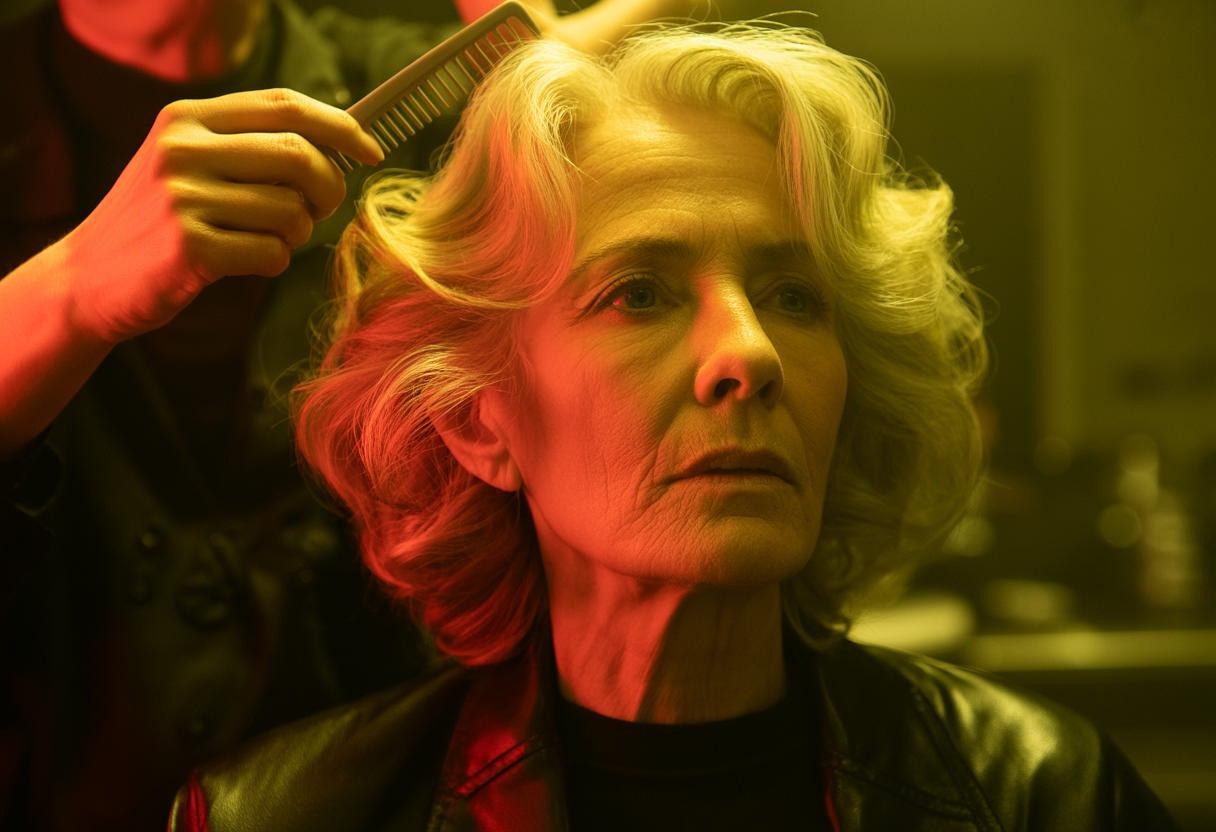At 70, Margaret Chen finally discovered the secret to getting exactly what she wanted from her salon visits—and it had nothing to do with changing stylists or researching new techniques. The breakthrough came when she realized she’d been speaking the wrong language entirely, focusing on hair problems instead of lifestyle solutions.
For decades, older adults have struggled with a communication gap in salons that goes far beyond simple styling preferences. Recent studies reveal that over 80% of stylists report clients sharing personal struggles during appointments, yet fewer than 25% feel equipped to address age-specific concerns effectively.
The psychology behind salon communication barriers
The hesitation many people experience when sitting in a stylist’s chair stems from deeper psychological barriers that intensify with age. Fear of judgment about age-appropriateness often prevents older adults from expressing their true styling desires, leading to generic “safe” cuts that leave them feeling invisible.
Research shows that ageist stereotypes create a perfect storm of self-consciousness. Many assume their stylist will automatically suggest conservative styles, so they preemptively limit their requests. This creates a cycle where stylists never learn what older clients actually want, perpetuating outdated assumptions about aging and beauty.
Breaking through the confidence barrier
Margaret’s revelation came during a consultation when her stylist asked an unexpected question: “How do you want your hair to make you feel when you wake up each morning?” This shift from problem-focused to emotion-focused dialogue opened entirely new possibilities.
Instead of saying “I have thinning hair,” she learned to say “I want to feel confident presenting at my book club.” This reframing helped her stylist understand that volume and movement mattered more than covering problem areas. Just like learning to embrace silver hair and update your style requires a mindset shift, effective salon communication demands focusing on desired outcomes rather than perceived flaws.
The game-changing conversation framework
Professional stylists now recommend a three-part approach that transforms salon consultations. First, describe your daily routine and lifestyle demands—whether you’re swimming twice weekly, traveling frequently, or prefer five-minute morning routines.
Second, share your hair history honestly, including past color treatments, medications, and hormonal changes. Stylists rate their ability to detect underlying issues at 7.6 out of 10, but they need complete information to provide optimal solutions.
Visual communication tools that work
The most successful consultations now incorporate visual aids that bypass verbal stumbling blocks. Creating a digital portfolio of preferred styles, textures, and even colors you’ve always wanted to try eliminates the guesswork that leads to disappointing results.
Margaret discovered that showing photos of how she wanted to feel (confident, approachable, sophisticated) proved more effective than describing hair technical details. This approach aligns with broader trends in transforming your wardrobe with strategic pieces after 50, where lifestyle needs drive aesthetic choices.
Practical steps for your next appointment
Before your consultation, prepare specific answers to three questions: What activities make you happiest? How much time do you want to spend on daily styling? What hair moments have made you feel most like yourself?
During the appointment, request a mirror consultation where you and your stylist examine your hair together while discussing options. This collaborative approach builds confidence and ensures you’re both working toward the same vision.
The maintenance conversation
Discuss realistic maintenance schedules upfront. Many older adults discover they prefer slightly longer periods between appointments when their cut grows out gracefully, rather than styles requiring frequent touch-ups.
Consider seasonal adjustments that accommodate lifestyle changes. Summer might call for easier maintenance, while fall could embrace richer colors or more structured styles for social events.
Why this approach transforms results
Margaret’s experience reflects a broader shift in the beauty industry toward personalized aging care that prioritizes individual expression over age-based assumptions. When communication focuses on enhancing personal lifestyle rather than hiding age-related changes, both stylists and clients report dramatically improved satisfaction.
The key insight that changed everything? Treating your stylist as a lifestyle consultant rather than a problem solver creates space for creative solutions that honor both your hair’s current reality and your personal vision for how you want to move through the world.
